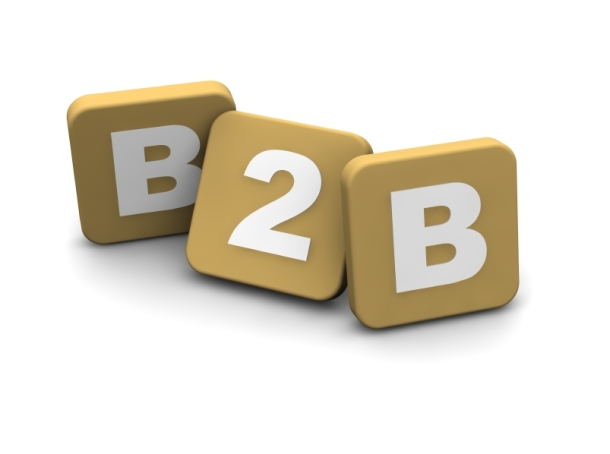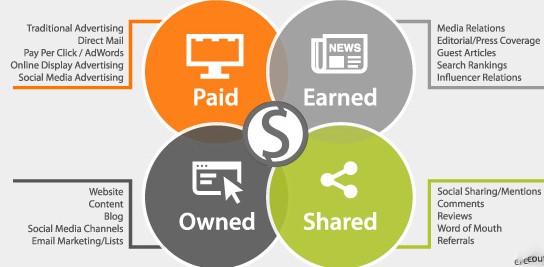In the world of B2B marketing strategies, CMO’s and marketing leads are finding out that there is allot more to them than just content and SEO.
Social media marketing companies seem to trot out the well worn lines of, you must create a library full of content, recalibrate your SEO, share the content on the social networks, and HEY PRESTO. Your business will have a flow of low cost inbound leads from buyers interested in buying your product or service. The logic around a content lead strategy for lots of businesses stacks up as the lower cost of an inbound lead against an outbound lead is sizeable, making it attractive to invest in SEO, articles, blogging and content.
So it can be easy for any marketer to assume that we all use social media. Most marketing people are active on the social networks as it forms part of marketing tactics and we also have to be up-to-date on latest trends. However, this is not the case for lots of senior business people and buyers. I have worked with lots of CEO’s who do not have profiles on LinkedIn or Twitter. Others in senior positions are not actively engaged with social media to get a result on trying to build awareness for your brand or even social selling tactics.
What lots of social media agencies will never tell you is that an inbound strategy does not work for all market sectors and can be in fact a waste of money, resources and time. For certain B2B companies operating in certain markets or industries, the reality is the target buyer audience can be too small or the products or services too specialised to be worth over investing in SEO, Google Adwords or Content Marketing. If your business is a new or disruptive product then maybe buyers is not yet doing keyword searches on Google for the solutions you sell.
You see most inbound marketing tactics try to hit multiple keywords or topics to engage buyers. Most of these tactics really are inexpensive to tee up and implement but the audience engagement is not an exact science (you can’t stop anyone reading your articles). So it does take some time to refine your tactics to narrow down sell-to leads.
When articles or blog posts are ranked in search engine results, the relevancy to the topic is mainly down to the keywords it has been optimised for. If your target is HR directors in the banking industry in Ireland then content and even paid advertising cannot be specifically targeted at them(you cannot control who reads or clicks). There are exceptions like social selling tools like LinkedIn or Connectors Marketplace where you can specify buyer profiles.
Let me be clear, I am not for one second suggesting B2B marketers should discount social media as part of their marketing strategy. The thing to remember is to keep the purpose and goals in perspective, don’t get carried away by stories, statistics and advice that may or may not be relevant to your business proposition.
To make social media pay, you should:
• Evaluate the social platforms for their fit to your marketing goals
• Can you feed them with quality content and informative articles
• Train up the sales team in social selling so they can use social media to nurture relationships
• Evaluate the social platforms for their fit to your marketing goals
• Can you feed them with quality content and informative articles
• Train up the sales team in social selling so they can use social media to nurture relationships
So when does inbound marketing have limited returns?
- The buyer is a specific person within that company: If one buyer has the authority to purchase your product with little influence from other stakeholders as it is not a critical purchasing decision (e.g. paper) then it is a challenge to engage this person with inbound marketing alone.
- The target market is small: When the target prospects are defined by location, company size or a single buyer (see above) in a company, the list of prospects can be very small. My own rule of thumb is if your prospect list is less than 1000 companies then a heavily weighted inbound strategy may only be helpful to raise awareness as the buyer will probably be targeted via sales calls.
- Disruptive technology or products: Where inbound excels is when the buyer is on a journey of self discovery (reading articles, whitepapers or engaged with social conversations) and where they understand the problem and the solutions. When a product is disruptive in nature a business may have to create demand as few buyers will be seeking out information. Inbound marketing does NOT create demand, it harvest levels of buyer interest based on keyword nets thrown out by marketing content.
The reality is that for some companies, the keyword net on Google searches and the social networks is simply too small to gather enough sales leads. This leaves options like outbound sales and referrals to harvest leads. We know referrals have a high conversion rate but this is not a repeatable sales process. So this leaves outbound selling (combined with social selling) makes for a repeatable, scalable sales process.
As someone who champions inbound marketing, social selling and good old fashioned sales techniques, I have to be frank and say if your products or services meet any of the criteria I wrote about above, then inbound marketing alone as a lead channel will have limited success. So contrary to what lots of social media gurus preach, inbound marketing is only part of the solution and it may not be a lead generation machine to feed sales.
So what marketing and sales strategies will work?
Marketing and sales leaders spend endless hours asking and answering this very question, “Where and how do we engage the right prospects?” The good news is there are still lots of options when it comes to reaching B2B prospects.
Embrace outbound prospecting: Hire in sales people who can pick up the phone and prospect AKA cold call. A business can now subscribe to automated lead generation platforms to give you large lists of prospects based on titles, industry and location with full contact details (email and telephone numbers) including social media profiles for social selling engagement. This works great for SaaS companies and companies with defined sales processes.
Still some life in events and trade shows: Attending events can be another way to connect with your target prospects and meet them in face-to-face. This can be a very personal approach that creates trust and builds relationships. The big barrier is that events cost money, have higher cost per lead, take time to plan and are they cannot scale in any major way.
Industry Webinars: If your own marketing reach is too small to make hosting your own webinar an option, then maybe consider trying to find a market research company, an industry publication or forum or a contact where you can piggy bank on their webinars to get access to their audience. It does take effort but can be a great way to grow a prospect list while providing valuable content to generate more awareness.
Customer Referrals: Some businesses do manage to generate a large portion of their leads via customer referrals and word of mouth. But a note of caution, this tactic is difficult to forecast and scale. Also from a sales process, it is hard to have a programmatic approach to word of mouth referrals. Even formal referral programs usually have low level of leads in certain B2B sectors.
Exposure in publications: Online and print publications are a B2B marketing channel worth exploring. Product reviews, news and interviews can be a great way to reach an audience and connect with prospects
We must all accept that the buyer’s journey is changing. Yes, social media marketing agencies are right when they say business buyers are increasingly relying on social media, social conversations, social reviews and other content as a means of gathering information about vendor solutions. But regardless of what B2B marketing strategy you pursue to generate leads or sales, there is still a huge place for direct human contact via well trained sales people. In the sales process there will always be a place where questions will best be addressed in a personal way especially in higher value deal sizes.

